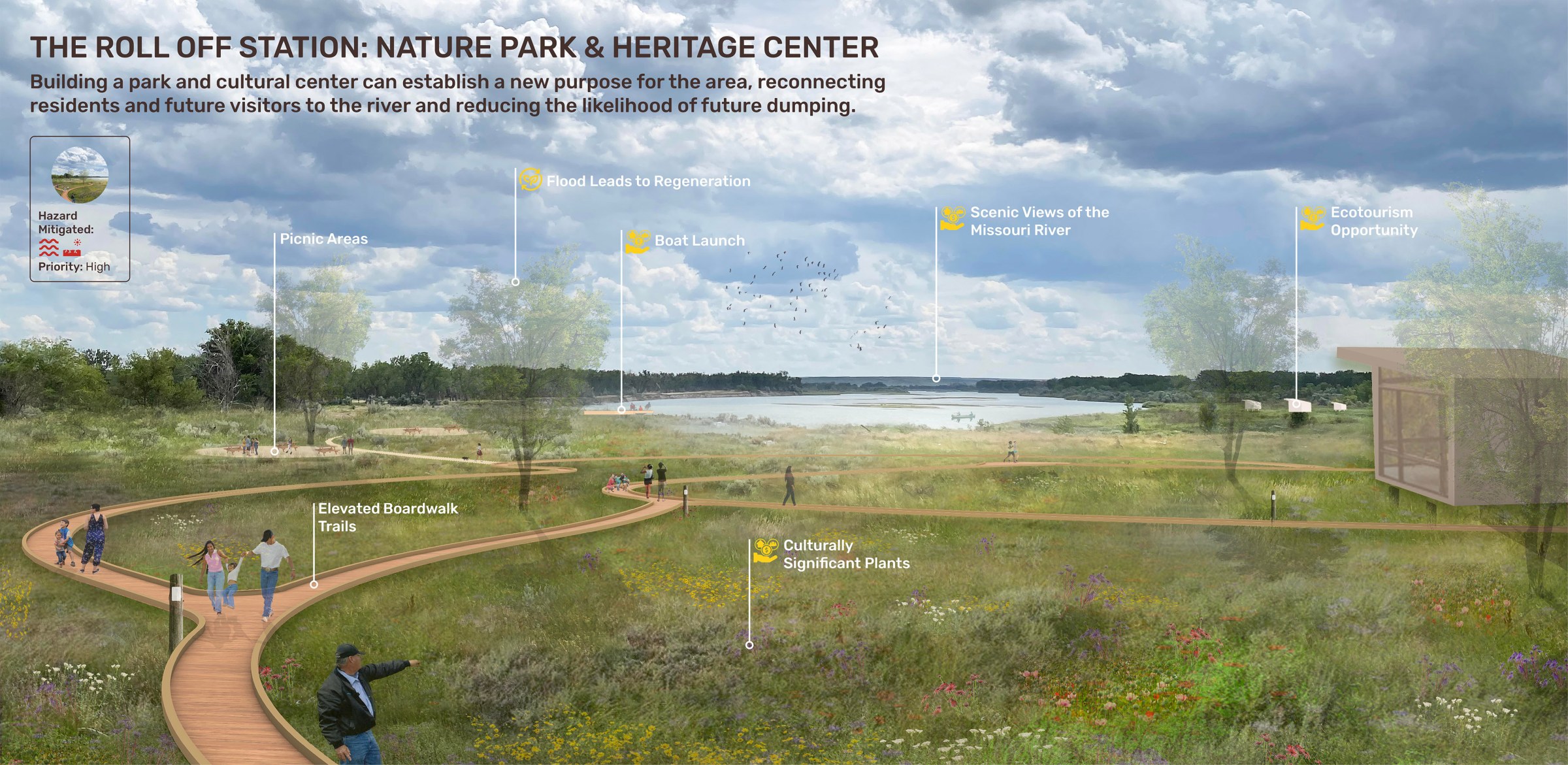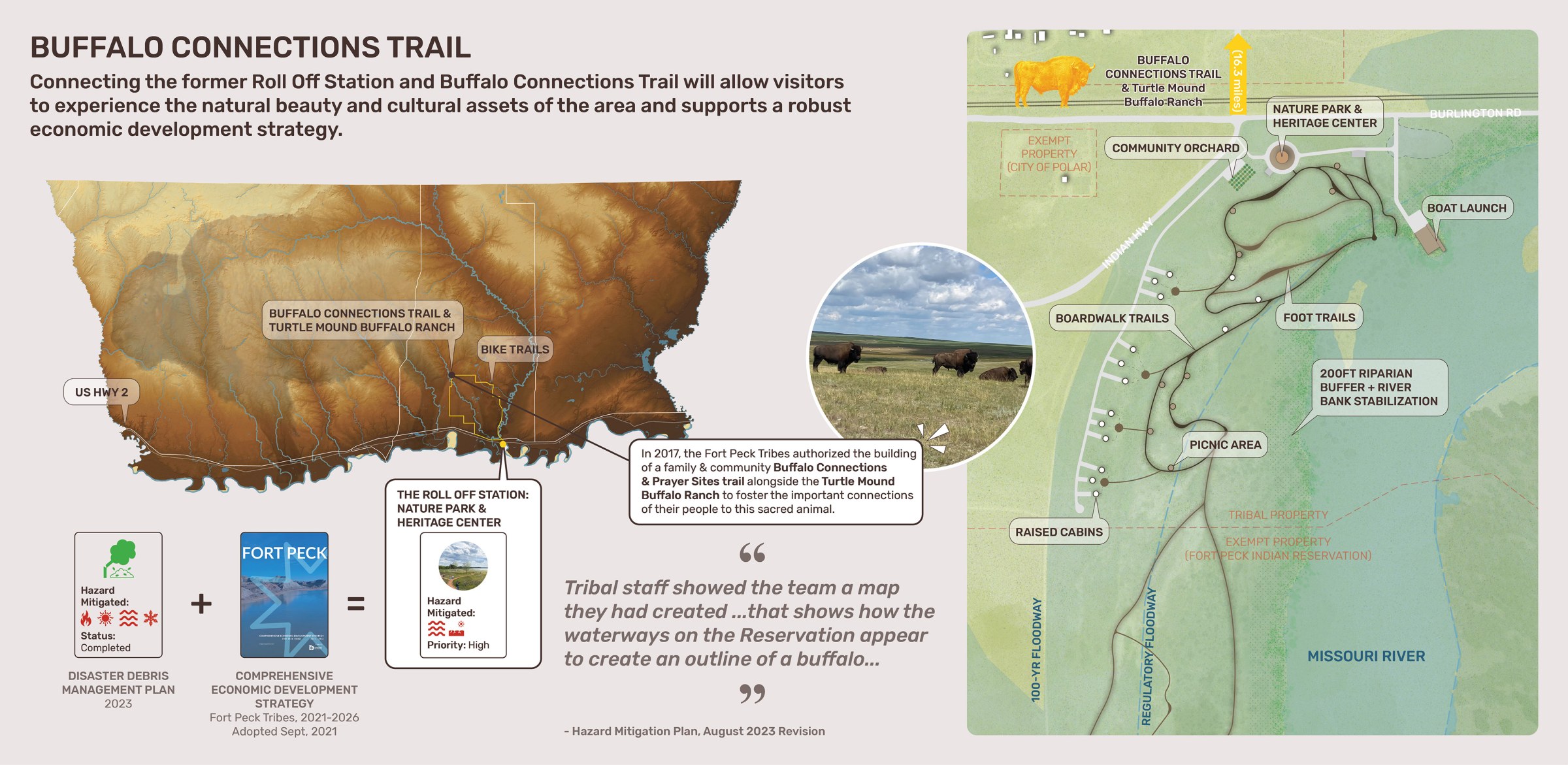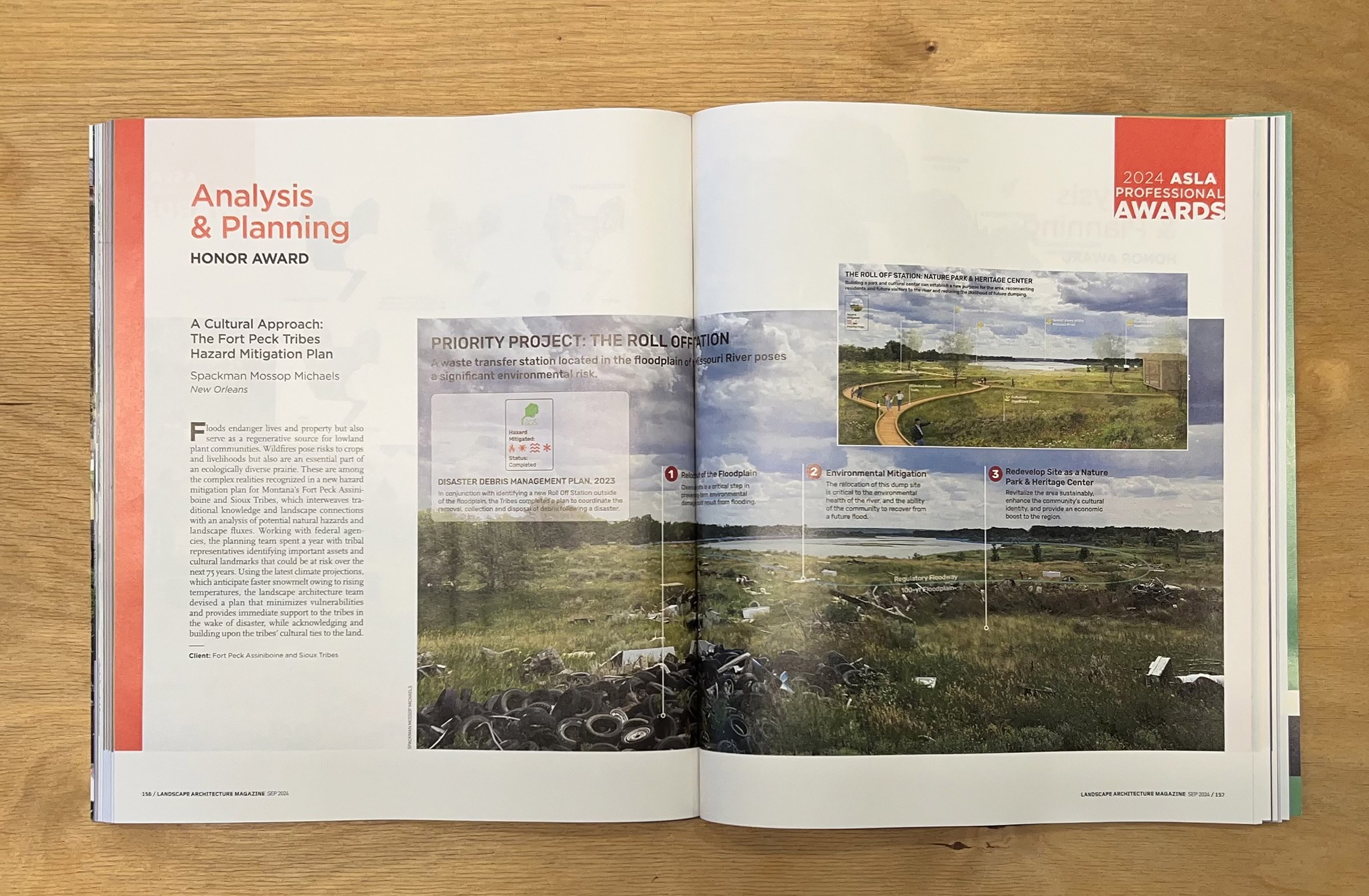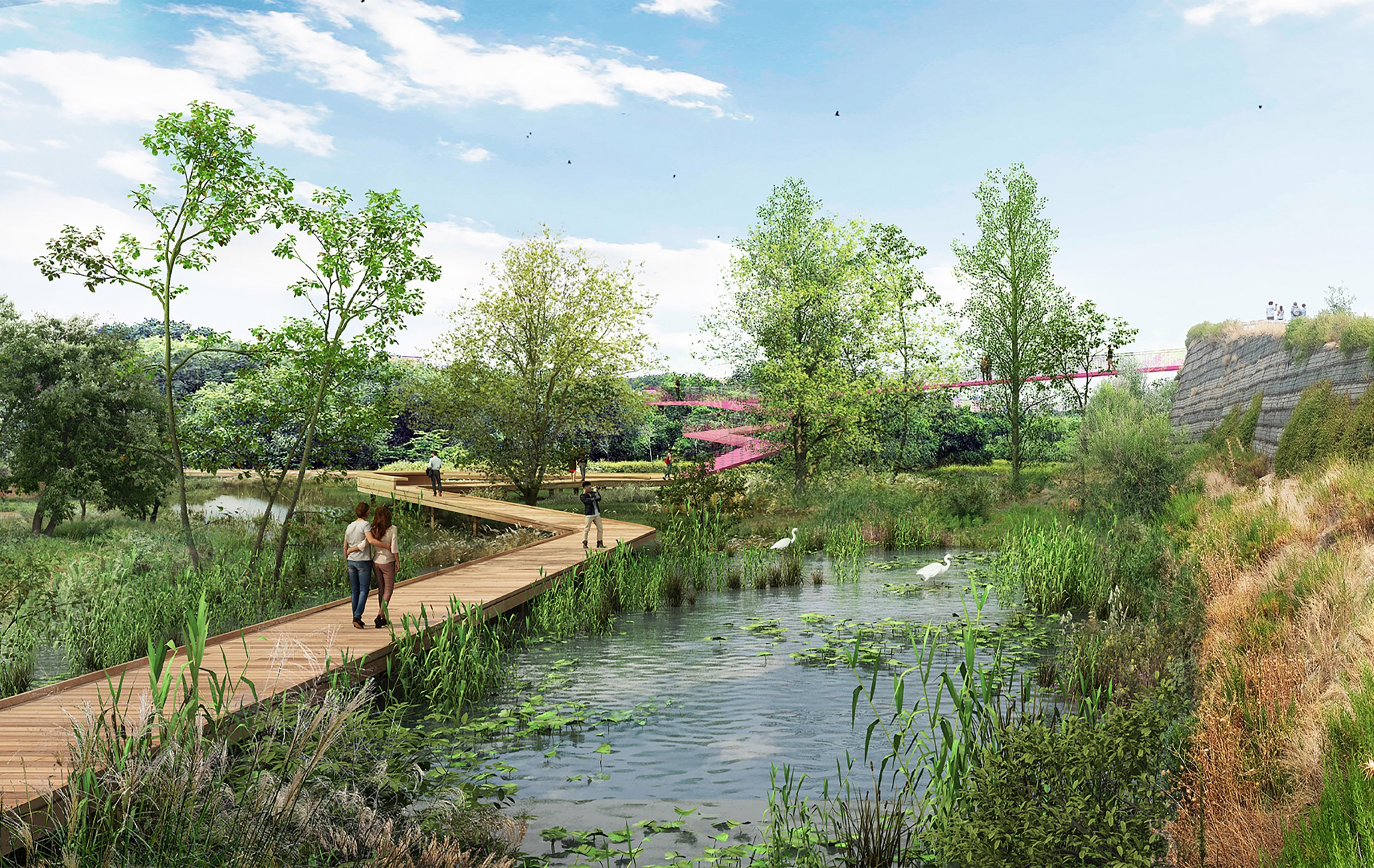Fort Peck Tribes Hazard Mitigation Plan receives National Honor Award for Analysis and Planning

November 6, 2024
BY ISABEL BERMAN
Wes Michaels, Associate Professor of Landscape Architecture, has received the prestigious 2024 American Society of Landscape Architects (ASLA) National Honor Award for Analysis and Planning.
Leading the project through his practice, Spackman Mossop Michaels (SMM), Michaels collaborated with the Fort Peck Assiniboine and Sioux Tribes, alongside the EPA and FEMA, to create an updated Hazard Mitigation Plan (HMP) that redefines resilience planning by placing cultural heritage and community engagement at its core. The Fort Peck Tribes Hazard Mitigation Plan (HMP) blends traditional knowledge and cultural values with technical expertise, centering around the Tribes' spiritual connection to their land, sacred water sources, medicinal plants, and bison herd as assets of resilience.
The Fort Peck Tribes’ HMP breaks from standard planning practices, with landscape architects taking a lead role to integrate cultural assets and local knowledge into hazard assessment and mitigation. Traditionally, HMPs focus on identifying risks and creating technical solutions to safeguard communities, but this plan emphasizes the importance of cultural identity and community values in strengthening resilience. Through extensive consultation with tribal leadership and residents, the plan acknowledges natural hazards' dual role as both threats and as forces that sustain cultural practices, such as the life-giving floods for the Tribes’ sacred cottonwood groves. As Michaels and his team gathered insights, they aligned traditional views on natural hazards with modern risk assessments, creating a comprehensive, culturally resonant mitigation strategy.
The year-long project not only updated the Tribes’ 2012 HMP but also incorporated future climate projections for the region, mapping climate risks from 2015 to 2100. This pilot effort between the EPA and FEMA included community-driven resilience projects such as enhancing early warning systems, managing drought and wildfire risk, and implementing flood mitigation measures. These projects serve the Fort Peck community by providing shelter, support, and recovery resources during disasters, while also offering year-round ecological and economic benefits, even supporting eco-tourism.
Through Michaels’ leadership, the Fort Peck HMP demonstrates the power of integrating social and cultural dimensions into hazard mitigation, showcasing how landscape architects can create resilience plans that are as much about people and place as they are about technical preparedness. This innovative approach sets a new precedent for collaborative, community-based hazard planning, bringing tangible solutions and reinforcing cultural values for future generations.






To learn more about this award, visit The American Society of Landscape Architects Fund.
Related
Madrid Metropolitan Forest wins the Water as Leverage City Champion Challenge
Professor Margarita Jover and Dean Iñaki Alday recently achieved international recognition for their work in sustainable design. The duo’s innovative project, the Madrid Metropolitan Forest, was recognized by UN Habitat as one of the four global winners of "Water as Leverage City Champion Challenge."
